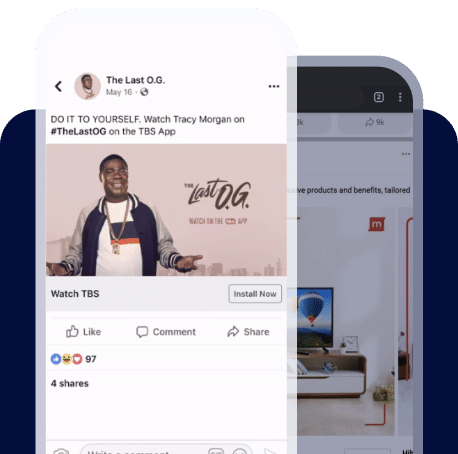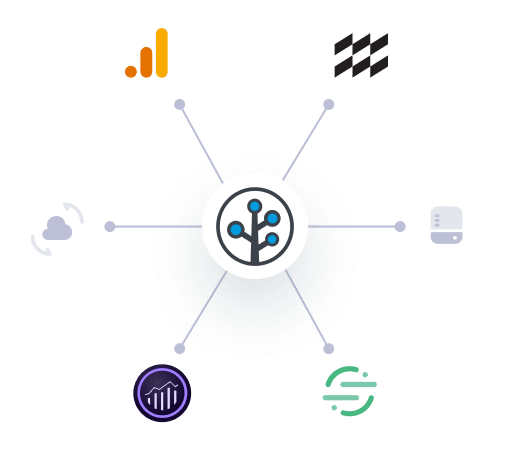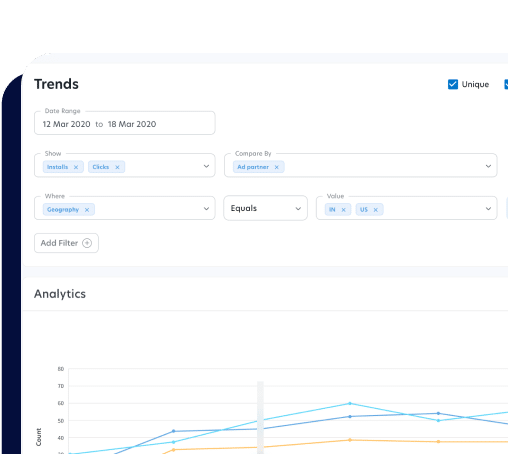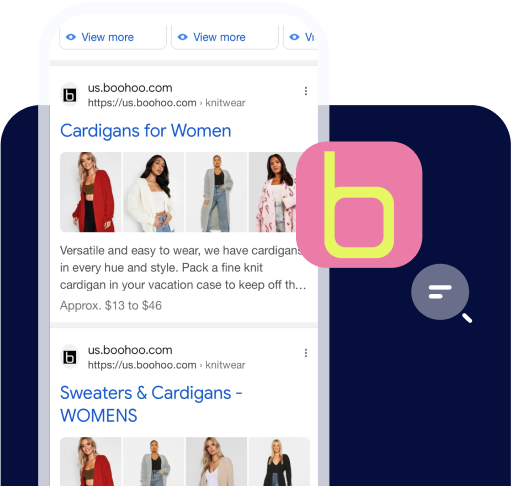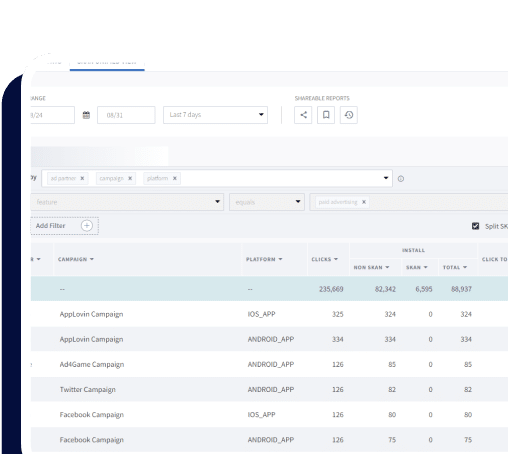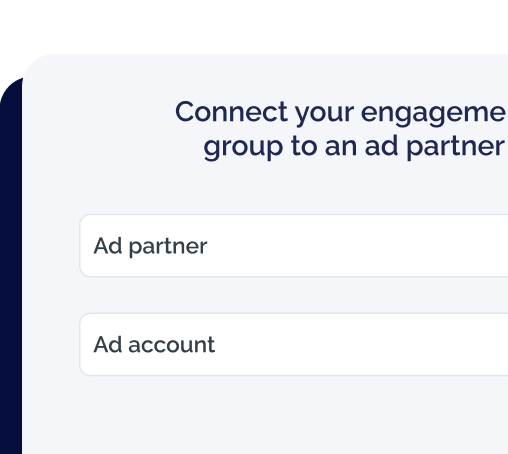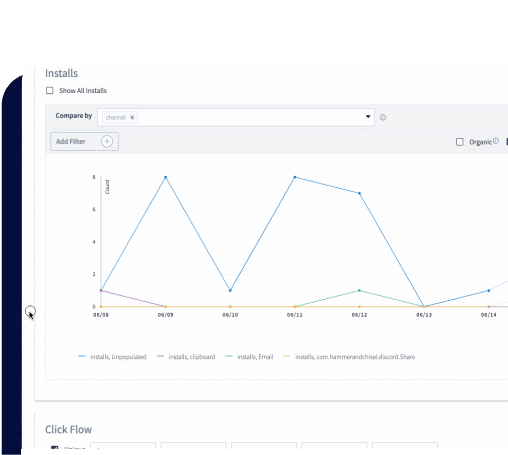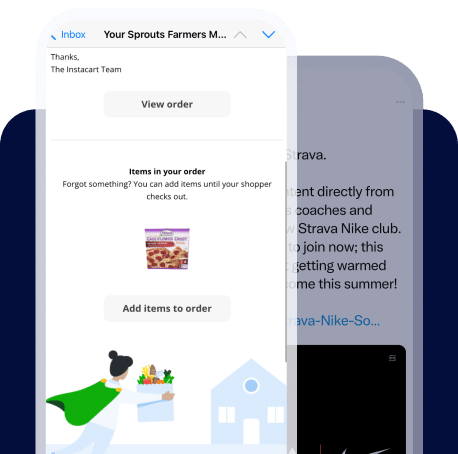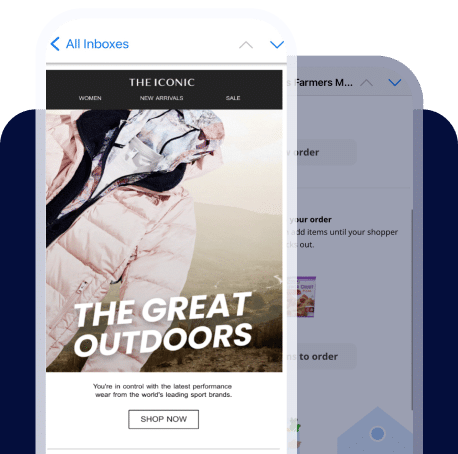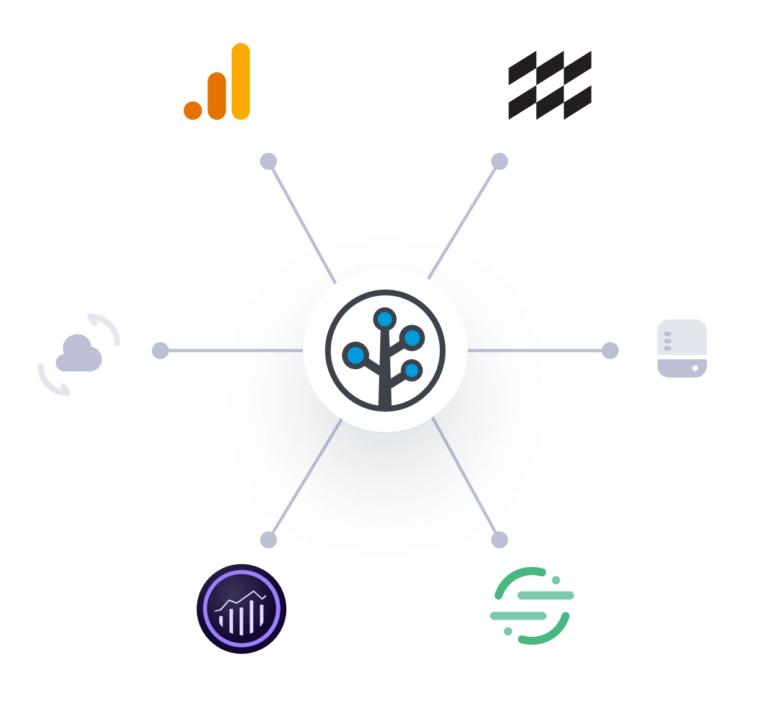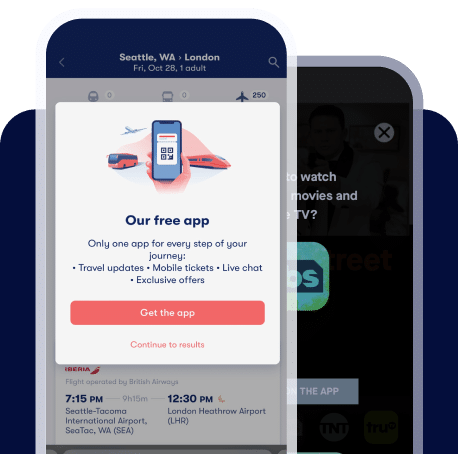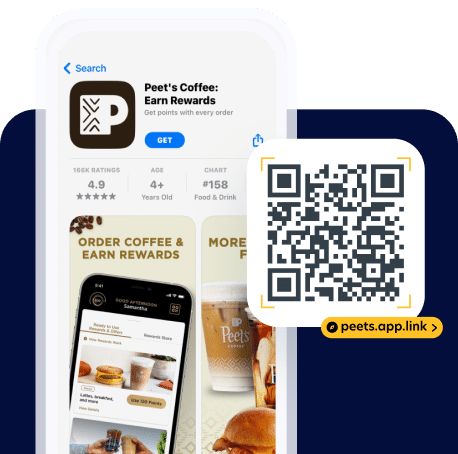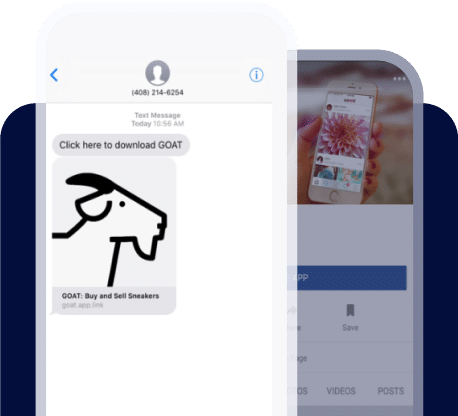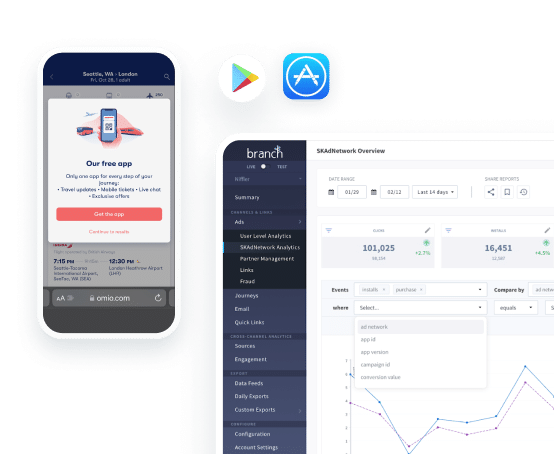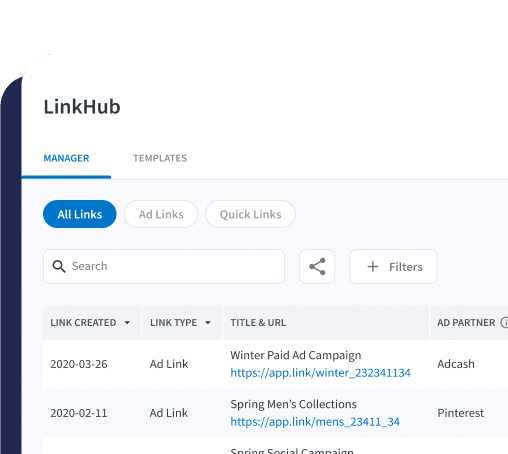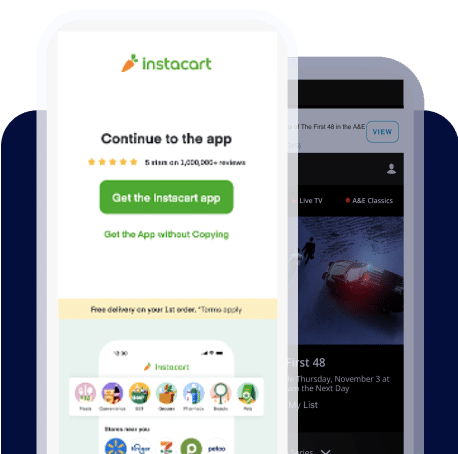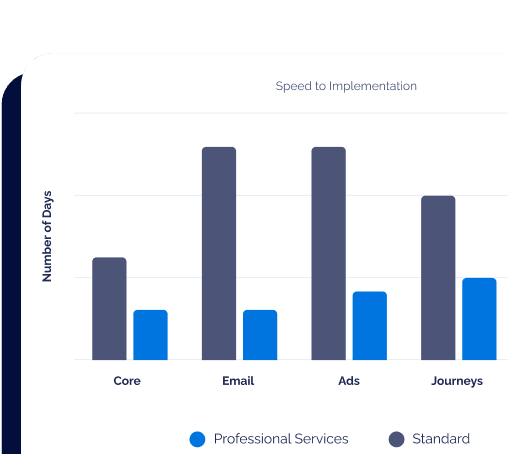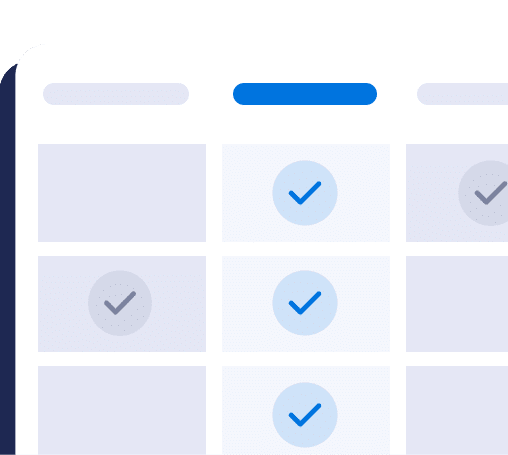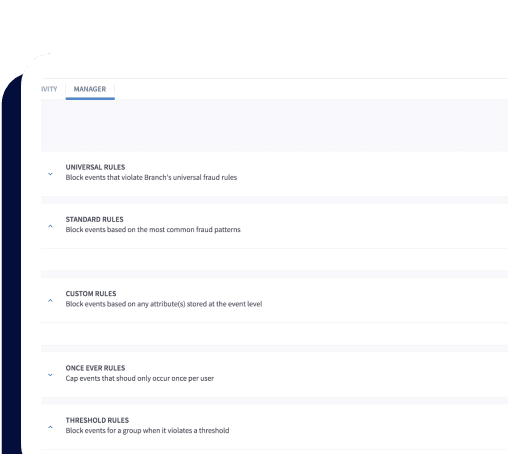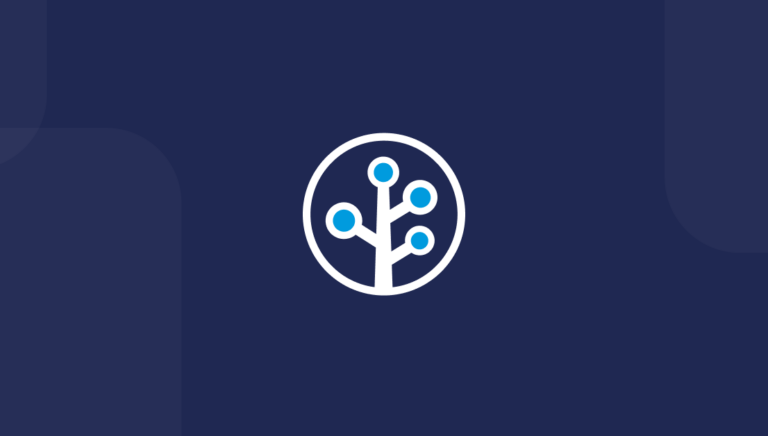After months of uncertainty and waiting, the hammer is about to fall: within the next few weeks, Apple will release iOS 14.5, introducing dramatic changes to how advertisers are able to measure and target advertising.
The details of Apple’s iOS 14 privacy plans have been covered extensively elsewhere at this point, but here is the main takeaway: device-level ad tracking on iOS now requires user consent, and without that consent the only alternative is Apple’s SKAdNetwork (SKAN).
Although these changes are now well documented, very few players in the space appear to be truly prepared for them:
- To date, only a few dozen ad networks have even begun the process of end-to-end campaign testing with SKAdNetwork. Without this, they remain completely reliant on traditional methods of attribution, which iOS 14.5 is about to make virtually impossible.
- The situation is no better amongst advertisers: according to Branch’s internal data, the vast majority have not yet completed the steps needed to leverage SKAdNetwork. This means they’re still planning to rely on device-level attribution, but our data shows most do not have a plan to present the necessary consent-gathering tool (Apple’s App Tracking Transparency framework) in their apps.
In other words: without the ability to use SKAdNetwork and without the ability to gain user consent for tracking, most apps will be completely unable to track paid ad-driven installs after iOS 14.5 goes live.
Unfortunately, for those ad networks and advertisers that have not already made the technical changes needed to support the new world order, it is probably now too late for the first release of iOS 14.5. Ad networks wishing to implement SKAN will need to coordinate SDK updates across thousands of publishers. Advertisers will need to hurry out their own app updates. And all parties need to complete end-to-end technical testing. Given that iOS 14.5 could be released any day, it’s now close to inevitable that most of the industry will not be prepared at launch.
This will lead to a perfect storm of campaign disruption and an almost total blackout of ad data. Paid ad traffic will appear as if it were “organic.” As this takes place, the usual processes of payment in the mobile ad industry will stop working.
For clarity, it’s worth spelling out exactly what that means for advertisers and their ad partners:
- As users upgrade their devices, it will still be possible to capture clicks and impressions. However, it will become impossible to join the dots between app installs and the campaigns that drove them.
- Mobile Measurement Partners (MMPs) will not receive any data — aggregate or device-level — to enable them to attribute installs.
- Ad networks that are continuing to display ad inventory and intending to be paid on a “cost per install” (CPI) basis will find they receive less and less credit as iOS 14.5 takes over.
- Advertisers will lose insight into which of their ad partners is driving business, and be unable to distinguish between paid and organic traffic.
Put simply, advertisers will not know who to pay for installs, and ad networks will not be able to prove their claims. This is a recipe for generating protracted disputes and gridlock between advertisers and ad partners.
What are the short-term options?
We believe the long-term solution is to implement SKAdNetwork (and set up the ATT modal if you still want to collect device-level ad data). We covered the steps to take in our previous post.
However, assuming that many ad networks and advertisers (perhaps even the majority) will soon find themselves in the position of operating blind for a while, it’s critical to have an idea of both what to expect, and what coping strategies are on the table.
Let’s review some generic ‘survival kit’ options, which all advertisers can consider:
Option 1: Do Nothing
If you haven’t configured your app to work with SKAN or the ATT user opt-in, your paid ad tracking will start to go dark with iOS 14.5. If you are running campaigns with ad partners on a standard cost-per-install basis, they will be serving up valuable inventory to promote your app, but you and your mobile measurement partner will be unable to credit your ad partners for the installs they provide.
Some unscrupulous advertisers may view this as a benefit: if ad networks cannot prove they drove traffic, do advertisers ever need to pay for them? While getting “something for nothing” might look appealing in the short run, this isn’t an approach we advise. It’s possible you will receive far higher billings from ad partners than you feel are justified, where they are forced to estimate install volumes based on proxies, like clicks generated. If you are dealing with multiple ad partners, there may be multiple claims for the same installs, which you cannot resolve using data, meaning you may be pushed to overpay.
Bottom line: Doing nothing is certainly an option, but getting into disputes with your ad partners is a costly distraction from the business of growing your app. This probably isn’t the time to bury your head in the sand.
Option 2: Time-Out
Given the scale of these impending disruptions, some advertisers may be planning to temporarily suspend ad campaigns when iOS 14.5 drops, and wait to take stock. A time-out means not spending money on campaigns you can’t track. It will also mean advertisers won’t run the risk of protracted disputes with ad partners who demand payment for installs which no-one can track.
A time-out might be the optimal strategy for your business if you are risk averse, and you can afford to take a pause in user acquisition while getting other systems like SKAN up and running in your app. If you are thinking of embracing this strategy, make sure all levels of your business understand what’s intended: Cutting off the flow of new users will be noticed by C-level management.
However, it’s also worth noting that in the United States especially, this could be a really inopportune moment to step out of the market. With the Federal Government about to push COVID stimulus checks of $1,400 to each American, many consumer businesses are likely to experience a boom in eCommerce sales. Based on experience in 2020, this could look like “Christmas in March”.
Bottom line: If your plan is to take a time-out, make sure everyone in the business knows this and that they are prepared to sit-out a potential stimulus-related bonanza.
Option 3: Move to Cost Per Impression or Cost Per Click Models
There was a time when cost per impression (CPM) and cost per click (CPC) were the norm. Over the past decade, mobile advertisers have gotten used to the benefits of tying advertising spend to installs and other conversions, and CPM and CPC models now look quaint by comparison.
However, for advertisers and ad partners who cannot set up SKAN or drive mass consent to device-level tracking via the ATT opt-in, these older approaches are better than nothing. Just remember: in this new world order, without using SKAN or gaining user consent for tracking, you will not be able to directly validate which installs and downstream conversion events stem from each ad partner.
Note: to maintain consistency of results, you may want to discuss ad serving rules that you previously were not concerned with when using a cost per install model. For example, you may want to enquire into whether your ad partner has frequency capping rules to prevent over exposing the same individual to your ad content.
Bottom line: If you are going to continue advertising with ad partners who lack iOS 14.5-compatible tracking, contact them in advance to discuss the possibility of falling back to CPM or CPC billing.
Option 4: Move to A Pure Insertion Order Model
Advertisers who have strong relationships with a small number of ad partners might consider moving away from CPI models to something closer to a pure insertion order model. Effectively, this means keeping payments the same, month on month, for partners you have previously worked with: ad partners commit to keep using the same volume of ad inventory and tactics to promote your app, and you commit to maintain payment at previous levels, despite neither party being able to accurately track the connection between advertisement and install.
This approach requires a high degree of trust between all parties, and will not be suitable for experimentation with new ad partners. This is not an approach that will be stable for more than a few months. Conversion and retention rates per partner will vary over time, and so with even the best of intentions, it will be difficult to ensure both parties are being treated fairly.
Bottom line: For advertisers with a small number of longstanding ad partner relationships, moving to insertion orders may be a viable approach to buy time while building out support for SKAN and the ATT opt-in.
Option 5: Streamline Campaigns to SKAN-Supported Ad Networks Only
As we discussed above, the vast majority of ad networks are not yet ready to support SKAN, but some ad networks are. If you are one of advertisers who have upgraded your app to use SKAN, you have the option to port your campaigns over.
Of course, SKAN data is “only” aggregate and has no device-level component, but if you are working with SKAN-compatible ad networks, you will still be able to track installs back to specific campaigns and reliably pay your different ad partners.
It’s worth noting that depending on how other advertisers who can’t use SKAN behave, this could provide very profitable growth opportunities: if the majority of SKAN-not-ready advertisers choose to take a time-out, you may find the cost of inventory falls significantly.
Note: Branch maintains a public directory of all ad networks who have confirmed they are SKAN ready and who have completed end-to-end testing with Branch.
Bottom line: If you got your ducks in a row and are already set to go with SKAdNetwork, congratulations! You can temporarily consolidate your spending to SKAN-ready networks while everyone else is catching up.
Option 6: Double-Down on Walled Garden Networks: Facebook, Google
Today, many advertisers drive the vast majority of their traffic via the two leading ad platforms: Facebook and Google. Both will be relying on SKAdNetwork for measurement after iOS 14.5, and will be supported by Branch. However, if you are using recent versions of the Facebook or Firebase SDKs and haven’t completed your Branch SKAdNetwork setup yet, you may already have the basic support you need for these networks.
Bottom line: While relying completely on the black box reporting of these walled gardens may be unappealing long-term, it could be a workable temporary solution while you wait for other integration work to catch up.
The final word
There are obviously many more potential strategies you could adopt. The intention here is not to be exhaustive, but rather to highlight some of the major avenues you should explore.
Whatever strategy you think your business is going to take, be sure to make that decision explicit. Discuss these issues across all of your teams now and make sure senior management is aware. Make sure partners in the wider Marketing, Product, and Operations teams know how you intend to deal with this disruption. If your plan might impact how you agree on payment with ad partners, or whether you continue advertising with them, signal your intentions in advance.
There are a lot of possible scenarios, and you cannot prepare for every eventuality. However, if iOS 14.5 does cause a “data black out” at the same time that we see an online shopping bonanza driven by COVID stimulus checks, everyone in the industry is going to busy answering phones and hosting emergency meetings to figure out what happens next. If you lay out your contingency plans now, you can still be ahead of the curve.

